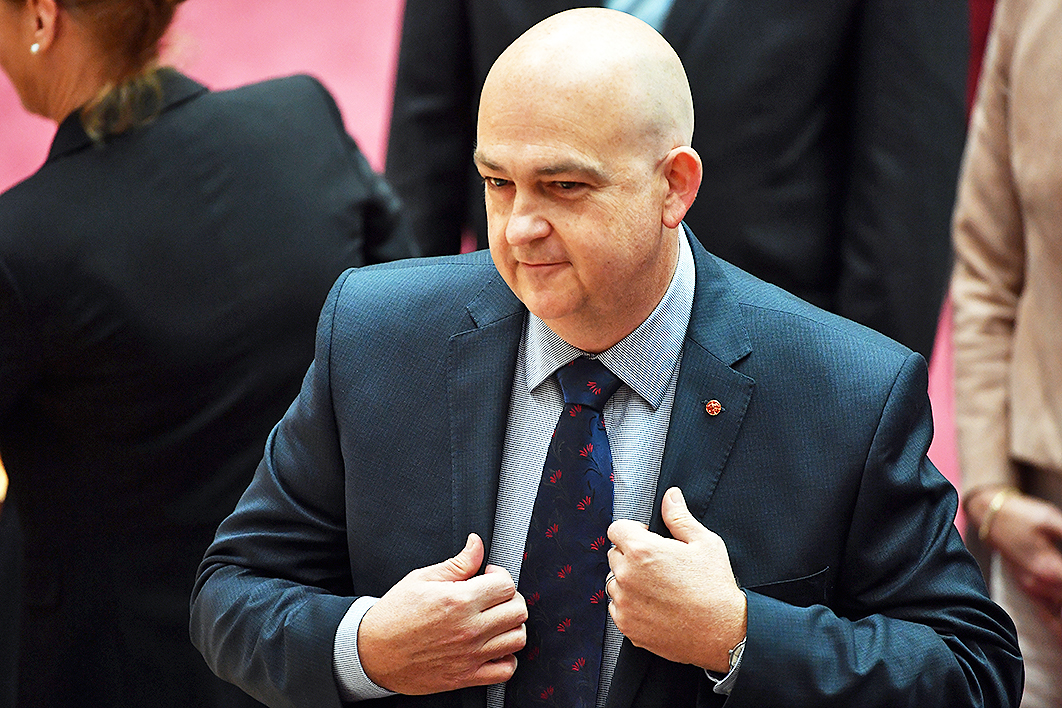Australia has a new president. No, we haven’t become a republic overnight; I am referring to the Senate president.
You might not be familiar with this position. But if you check your copy of the Australian Constitution, you’ll find this modern-sounding creature discussed in sections 17 and 18, which have been there since 1901. (What you won’t find in the Constitution is any reference to the prime minister.)
The president of the Senate is the presiding officer of the Senate chamber — the equivalent of the speaker in the House of Representatives. If you are arranging a formal event, the president ranks ahead of the deputy prime minister, the chief justice and former prime ministers.
To preserve the equal representation of the states — the principle that underlies the makeup of the Senate — the president not only chairs debate in the chamber but also has the right to vote on any matter. These days, though, presidents rarely speak during debates.
With the current crossbench of fourteen (encompassing four parties and an independent) between the government and opposition, debate in the Senate matters. It therefore matters that a competent, impartial and respected president is presiding over it.
The incumbent, Scott Ryan, was generally regarded as meeting these requirements. (Just ask Labor’s Penny Wong.) But he recently announced he was bringing forward his resignation as president from the next election to the next parliamentary sitting. So when parliament resumed this week the Senate had to choose a new president.
The current convention is that the president is elected from the party or coalition that forms government. The convention matters, because only during one parliamentary term this century — the last term of the Howard government — has the government of the day actually controlled the Senate. Given the propensity of maverick senator Barnaby Joyce to cross the floor during those years, even that control wasn’t total.
But there is no constitutional provision along these lines. The Greens have proposed alternative candidates in the past. If Labor had supported one of them, things could have got interesting. Senator Wong has argued that “convention is not a blank cheque.” But this week’s election proceeded as normal.
The Liberal senator Slade Brockman beat fellow Western Australian Dean Smith to become the government’s nominee, and thus the president. How does Senator Brockman compare to earlier presidents? He would continue a pattern of the outlying states being well-represented in the role: although Senator Ryan was only the second president from Victoria, four each have come from Queensland, Western Australia and Tasmania, and six from South Australia.
Slade was born in 1970. It’s possible his parents were early fans of the English glam rock group of that name — though more likely he was named after the surveyor and explorer, Frederick Slade Drake-Brockman, the father of WA senator Edmund Drake-Brockman.
Senator Brockman would be one of the youngest senators to take up a role that has usually gone to an “elder statesman.” The first president, Richard Baker, was one of the founding fathers of federation. John Hayes was a former Tasmanian premier. Senator Ryan was only the third president under fifty.
He would also be one of the shortest-serving senators to take up the role, having only sat in the Senate since 2017. His relevant experience goes back further, however, to his eight years as chief of staff to senator Mathias Cormann. Other than the first president, of course, the president with the shortest service in the Senate when appointed was Alister McMullin. He became president after only two years in the chamber but went on to become the longest-serving president, serving from 1953 to 1971.
A few records broken, in other words, and the government will no doubt be hoping that he also avoids being among the shortest-serving presidents by having to relinquish his place after the next federal election. •




